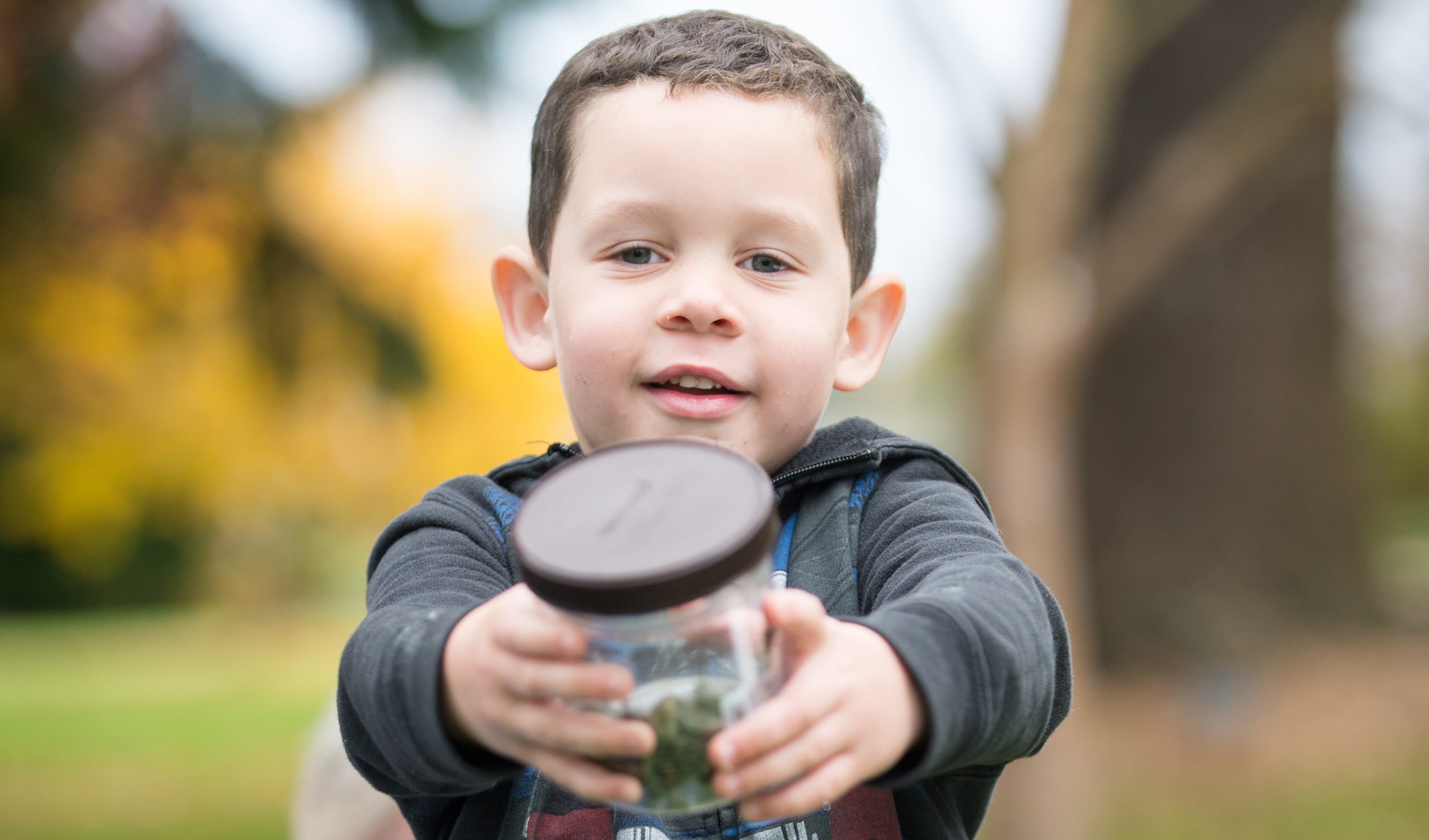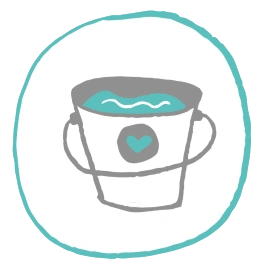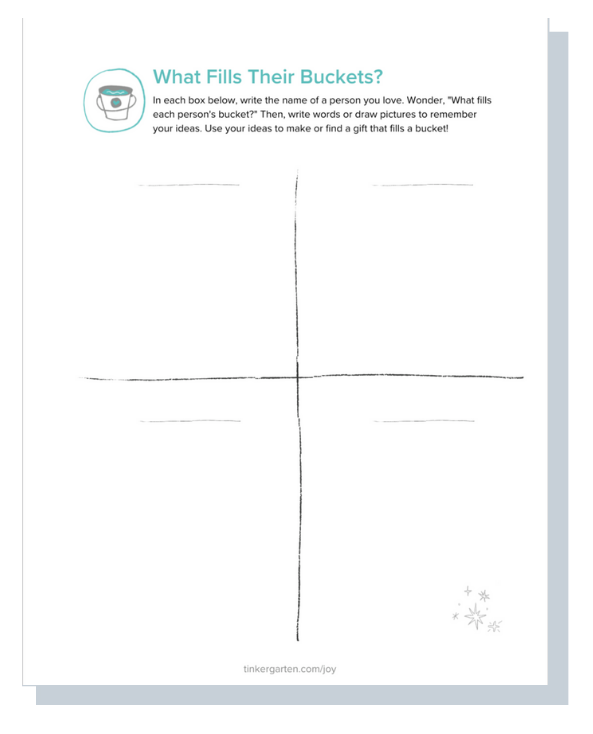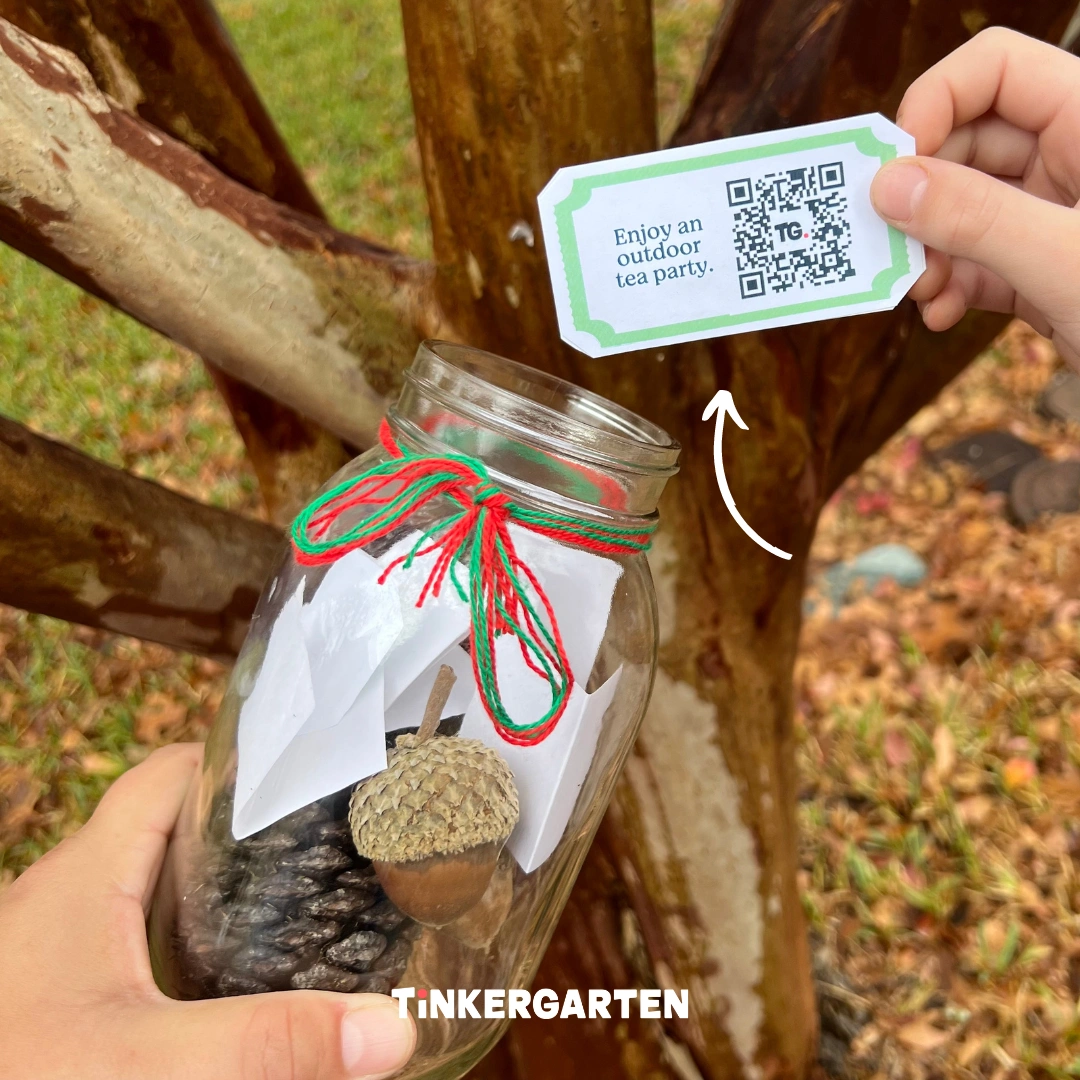When our oldest, now 13, turned three, she clearly started to clue that this is a gift giving time of year. At the time, my husband and I felt a strong desire to curb her enthusiasm for receiving presents. We wanted to ground holidays as meaning more than stuff. And, as a teacher, I had long felt the discomfort around disparities between what my students were and were not celebrating, and what kids were and were not receiving. Many times, I remember wondering, could we just do away with gifts altogether?
To counterbalance the impact I felt in the classroom, we continue to help our kids learn about and celebrate different holiday traditions. And, we've encouraged them to think about how it would feel to hear about gift giving in social spaces like the neighborhood or school when they are not a part of that tradition, and adjust their behavior appropriately.
When kids learn about other cultural traditions and are asked take another's point of view, they get and stay curious, develop greater empathy, and form a foundation on which to understand other traditions for their value--not just for how they are "not like ours." If you're looking for ideas around helping kids explore and embrace different cultures, I found this post from Embrace Race and this post from PBS Kids full of food for thought.
And, though we still strive to teach my now three kids that holidays mean more than presents, over time, we've shifted away from focusing on stamping out their excitement around gifts. For one, gifts are pretty darn exciting, both to kids and the people who bestow gifts on kids. But even more, we've started to realize that, maybe, generosity doesn't require the relinquishing of the excitement around receiving. It’s really all about getting a taste for the joy of giving.
Once we started engaging kids in the process of gift giving, we found that the giving of gifts is what they anticipate and remember most. It turns out, the lead up to the holidays is a marvelous time to get kids hooked on giving, and even boost kids' empathy in the process.
Getting kids hooked on giving
It’s not too hard to get kids to fall in love with giving. Kids demonstrate the ability to do kind things and feel the positivity of kindness (aka prosocial tendencies) from as early as infancy. Once kids experience the giving cycle—planning and thinking about someone you love; picking out or making something that would bring them joy; wrapping it up; giving it to them; and seeing their reaction—they feel the kind of joy and satisfaction that naturally gets you wanting more.
Step one: Thinking about the people we love
A great way to get kids engaged in meaningful giving is by talking, thinking and even drawing or writing about the people kids love. Specifically, you can try to brainstorm things that would bring each person the feelings of happiness.
With young kids, the right context and prompt can really help. At Tinkergarten, when we teach about kindness, we help kids to imagine that everyone has a bucket in their hearts. That bucket fills up when we experience acts of kindness or things that bring us joy. And, for each of us, different experiences fill up our buckets.
To make the concept even more concrete, start kids talking about what fills their bucket first. You can even scoop water or rice into a literal bucket or container as you enumerate things that might fill up your child's inner bucket. Starting by having kids imagine and explore their own "bucket" can help them transfer the concept to others.
What fills others' buckets?
Next, you can start to wonder about what experiences and things fill the buckets of other people kids love. You can ask questions like, “What makes Daddy feel happy?” or “What do you think fills Nana’s bucket?” You can continue to surface these questions in the days leading up to the holidays, welcoming kids to keep thinking of new ideas.
For kids who can dictate, draw or write their ideas, you can print and use simple worksheets like this. Kids can practice their communication skills as they brainstorm and record their ideas. Their words and drawings can also become sweet treasures to save or give to the people they love, too.
For a real treat, make quick videos or audio recordings of kids describing what fills their loved ones’ buckets. Hearing the ideas in their own voices is sweeter than any present you can buy—and these recordings become even more treasured by everyone as kids get older.
Step two: Pick gifts that fill buckets
Once you have ideas about what fills buckets, you can also pick gifts that will truly bring joy. Helping kids to make the connection between what each person likes and the gifts you pick also makes the act of giving more meaningful and exciting. And, the gifts don’t need to be costly—they are thoughtful, which often means the most to both the giver and the receiver.
Give gifts that promise experiences that will fill buckets. For example, you can create and give coupons for the kinds of adventures that immediate family love. If a loved one is happiest when hiking, give them twelve "hike coupons"—one to redeem for a hike each month in the coming year. Or, give them a list of hikes near where they live with the chance to cross them all off in the coming year.
If a sibling loves colors, get some liquid watercolors or food coloring and a fun ice mold with the promise of hours and hours of play outside with colorful frozen treasure!
If a neighbor loves the birds in their garden, give them a gift bag with bundle of bird seed, a few pine cones and some nut butter. Include directions for how to turn them into bird feeders. Try the same activity at home, and kids will be able to visit and talk with the neighbor about the birds they’re each seeing—a gift that keeps on giving!
Give the gift of experiences
Perhaps the best gift of all are experiences that we can look forward to, enjoy and remember always. Here are a few of our favorite ways to gift experiences:
- Make a friend or loved one a Potion Pot or Mixing Jar, complete with directions on how to meet up outside to play!
- Turn an empty jar into an Outdoor Adventure jar, filled with ideas for outdoor play adventures and experiences. The lucky friend can pull a new idea out whenever they have time to explore and enjoy the great outdoors. You can even find printable idea cards, complete with QR codes to directions and even more inspiration!
- Gift someone a Winter Treasure Box to help them curate a marvelous collection of nature treasures this season, and beyond!
The best gift of all? Empathy!
Slowing down and encouraging kids to think about what would make another person they love happy teaches kids powerful lessons in empathy. Specifically, you’re helping kids develop two key types of empathy:
- First, thinking about joy and happiness boosts "affective empathy,” which is the ability to recognize emotions in oneself and others.
- Kids also build “cognitive empathy,” or the ability to consider the other person’s unique point of view, when they consider what would make someone else happy, especially when that is something different from what makes them happy themselves.
So, though we can't likely keep kids from getting swept up in the excitement of gifts received, we can do our part to ensure they fall head over heels for the feels you get when you give just the right gift to someone you love!




